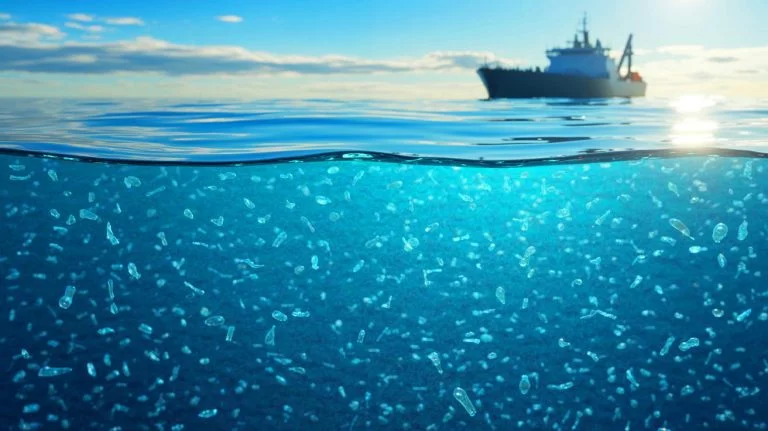| IN A NUTSHELL |
|
The North Atlantic Ocean, a seemingly endless expanse of blue, harbors a hidden crisis: billions of nanoplastics, invisible to the naked eye, floating silently beneath the waves. A recent study highlights that this pollution is far more extensive than previously thought, raising urgent environmental and health concerns. Researchers from the Netherlands have uncovered that around 30 million tons of nanoplastics are polluting the North Atlantic. This discovery, published in the journal Nature, underscores the massive scale of this issue, which has been underestimated until now.
The Hidden Menace of Nanoplastics
Nanoplastics, minute particles resulting from the breakdown of larger plastic debris, are a growing environmental threat. These particles are small enough to evade detection by the human eye and conventional sensors, making them particularly insidious. The new study employed innovative analysis methods to quantify their presence accurately. By collecting water samples onboard a research vessel, a student researcher was able to analyze these samples in a laboratory setting, employing highly sensitive techniques to measure the nanoplastic content.
The implications of these findings are profound. Nanoplastics do not remain isolated. They are carried by rivers, winds, and rain, dispersing widely across marine environments. Their small size enables them to infiltrate ecosystems, potentially affecting marine life at all levels. As these particles accumulate, they pose a significant threat to marine biodiversity, with effects that ripple through the food chain.
Impacts on Marine Life and Human Health
The introduction of nanoplastics into marine ecosystems has alarming consequences. Marine organisms, from the smallest plankton to larger fish, ingest these particles, mistaking them for food. Once ingested, nanoplastics can cause physical harm or toxicity to marine life. This contamination is not confined to the ocean—it extends to humans, who consume seafood. The health effects of nanoplastics on humans remain largely unknown, but their presence in the food chain is a cause for concern.
Researchers are particularly worried about the potential for bioaccumulation, wherein nanoplastics concentrate in organisms over time, leading to higher levels of exposure in larger animals, including humans. This phenomenon could lead to unforeseen health issues. As scientists continue to explore these impacts, the need for comprehensive research into the effects of nanoplastics on health becomes increasingly imperative.
Current Research and Future Directions
Current research efforts are focused on understanding the composition, distribution, and impact of nanoplastics in marine environments. Scientists aim to identify the types of plastics present, their points of concentration, and their specific effects on ecosystems. This research is crucial for developing effective strategies to mitigate their presence and impact.
To address these challenges, researchers advocate for enhanced monitoring systems and stricter regulations on plastic waste management. By improving waste management practices and reducing plastic pollution at the source, it may be possible to limit the introduction of nanoplastics into the environment. Collaborative international efforts are essential, as marine pollution knows no borders. The scientific community is calling for urgent action to address this escalating crisis.
Policy Implications and Global Response
The findings of this study have significant policy implications. Governments around the world are urged to take decisive steps to combat plastic pollution. This includes enforcing stricter regulations on plastic production and waste management, promoting alternatives to plastic, and investing in research and development of biodegradable materials. International cooperation is vital, as the issue of nanoplastics is a global one.
Public awareness campaigns are also critical in addressing the problem at its source. By educating consumers about the impact of plastic pollution and encouraging sustainable practices, it is possible to reduce the demand for single-use plastics. The global community must come together to tackle this pervasive issue, ensuring a healthier, more sustainable future for the planet.
As the scale of nanoplastic pollution becomes increasingly apparent, the urgency for action intensifies. Scientists, policymakers, and the public must work collaboratively to address this invisible threat. How will societies balance economic growth with environmental sustainability in the fight against nanoplastic pollution?
Did you like it? 4.4/5 (23)








Wow, 27 million tons? That’s like a mountain of plastic! 🏔️
How do they know it’s specifically 30 million tons? Sounds like a wild guess to me.
Thank you for highlighting this critical issue. It’s truly alarming. 🙏
Does anyone else feel like we’re drowning in our own waste? 😢
Is there a way to filter these nanoplastics out of the ocean?
I knew it! It’s always worse than they say initially. Classic.